The Maryland Zoo is excited to welcome five newly hatched trumpeter swan cygnets to the family! The cygnets hatched over a 24-hour period beginning on Friday, May 13 after an approximately 34 day gestation period. “This was our first clutch of trumpeter swan eggs here at the Zoo, and we are thrilled that they have hatched here in the Farmyard,” stated Jen Kottyan, avian collection and conservation manager. “Friday the 13th was certainly a good day for us this month!”
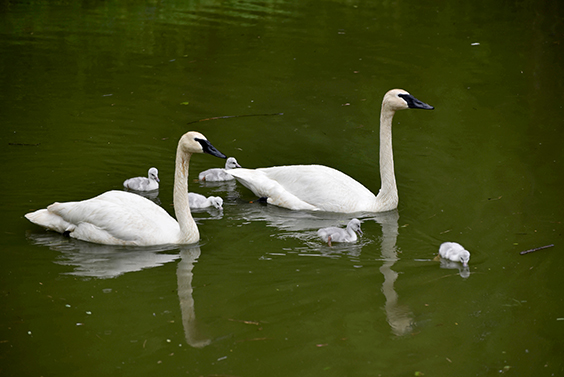
Trumpeter swans are the largest waterfowl breed native to North America and the largest swan in the world. They can weigh up to 35 pounds, and are known for their bright white feathers, black beaks, very large webbed feet and an eight-foot wingspan. In the early 1900s, trumpeter swans were nearly hunted to extinction for their skin, feathers, meat, and eggs. The passage of the Migratory Bird Treaty Act of 1918 gave protection to trumpeter swans and other birds which helped curb illegal killing, however the population continued to decline and in 1932 it was believed that there were less than 70 trumpeter swans remaining. In 1935, the U.S. government established Red Rock Lakes National Wildlife Refuge (NWR) in Montana’s Centennial Valley to protect the remaining trumpeters.
“Today, thanks to many conservation and restoration efforts, trumpeter swans number in the 16,000s,” continued Kottyan. “Our cygnets will become part of the wild population as they will be moved to Iowa in the fall to be released next spring to the wild after a year of head-start growth. We are very proud to be a part of the effort to bolster the population of this amazing bird so future generations can be inspired by their beauty.”Trumpeter swans disappeared from Iowa by the late 1880s. For two decades, the Iowa Department of Natural Resources has worked to reestablish trumpeter swans to the state.
The trumpeter swans and five cygnets are at the pond in the Maryland Wilderness Farmyard. Their nest is across the pond from the dock, however the swans utilize the entire area during the day as they swim on the pond and forage for small insects and pond vegetation. “We encourage visitors to come often over the summer and watch the birds grow,” concluded Kottyan. “It’s very exciting to watch them go from downy chicks to juvenile swans under the watchful eye of their parents.”

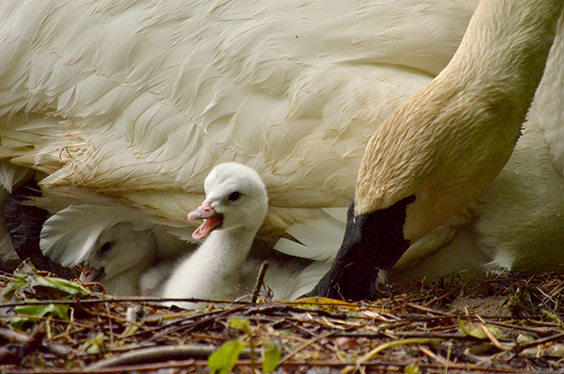
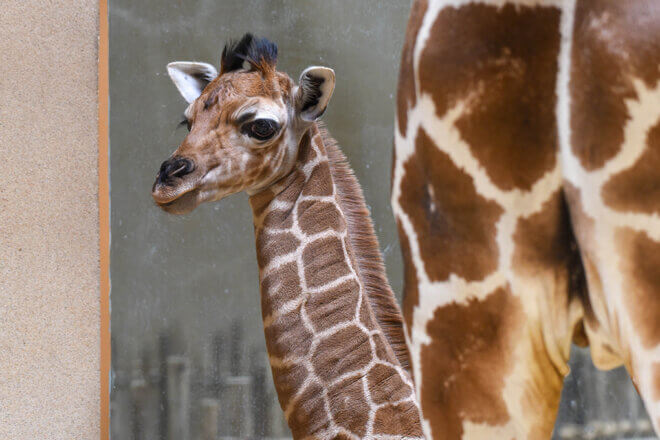
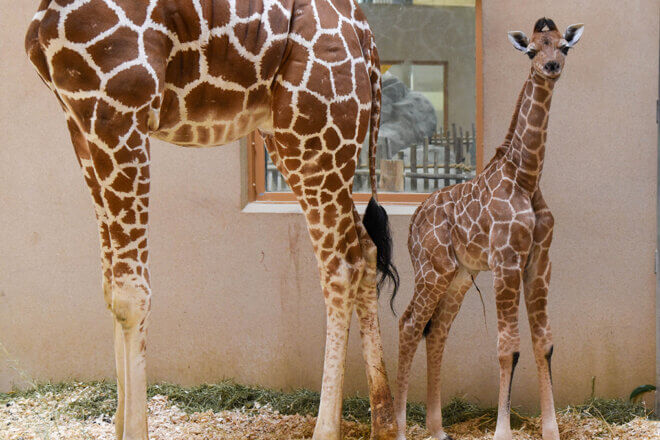

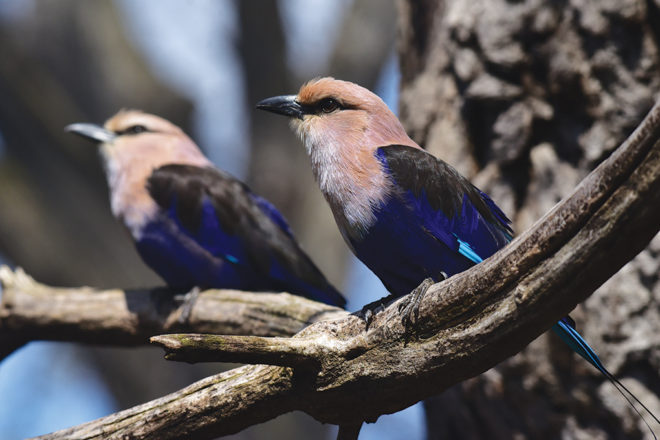
Share this article